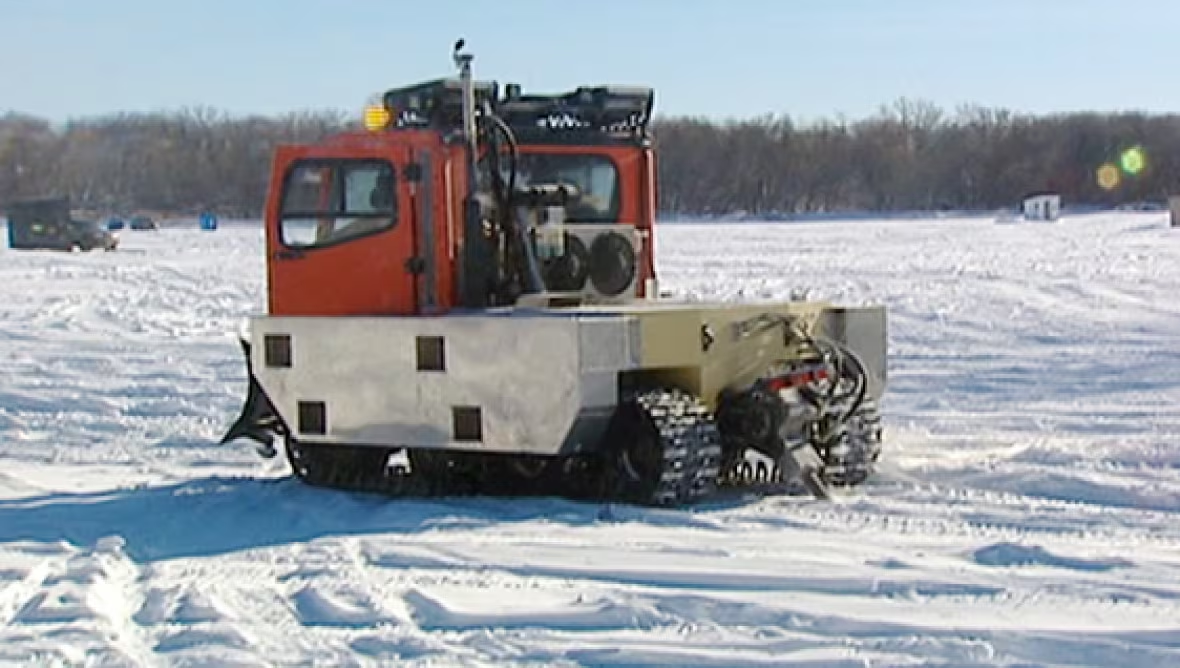Manitoba sends out Amphibexes to break up ice in preparation for spring
Amphibexes and ice cutters head onto river between Netley Creek and Netley Lake, north of Selkirk

In a sure sign of spring's approach, Manitoba is sending its ice cutters and icebreakers onto the Red River to prevent ice jams when the big thaw comes.
The Amphibexes and ice cutters will head onto the river between Netley Creek and Netley Lake, north of Selkirk, starting Wednesday.
The annual program focuses on sections of the north Red River with a history of ice jam-related flooding.
The Amphibex is a bizarre-looking half-back-hoe, half-barge. It was originally designed to perform summer dredging but Manitoba found a way to use its 20,000-kilogram body to smash ice.

It pushes itself up using its excavator-like claw, then the sheer weight of the machine dropping back down breaks apart the ice.
The province's engineers discovered that it could break up more ice, more efficiently, if the ice was weakened by being cut or scored first.
Unable to find equipment that could do the job, they made their own ice cutter by essentially strapping a saw blade to a tractor. That has since evolved into a Bobcat that is specially rigged with a big saw and floatation devices in case it breaks through the ice.

Together, the fleet — operated and maintained by North Red Waterway Maintenance Inc., a corporation formed by the rural municipalities of St. Andrews, St. Clements and the City of Selkirk — crushes more than 25 kilometres of river ice annually.
Signs will be set up warning people to stay clear of the machines and ice fishers are asked to remove huts or other material in those areas.